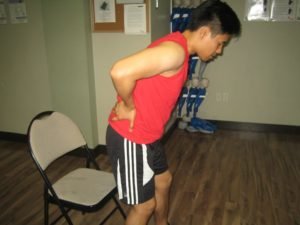Back spasms can occur during or after running or when engaging in other strenuous activities. These spasms develop once the muscles in the lower back become tight and sore. The back spasms can be the result of previous trauma, muscular weakness or inflammation in the region.
There are various instances of back spasms that can be prevented with correct running techniques, strengthening, stretching and other anticipatory measures. If an individual experiences frequent back spasms, it is best to consult a doctor for proper assessment in order to rule out other serious conditions.
Muscle imbalances
It is important to note that back spasms often occur once the muscles are imbalanced, resulting the spine to pull out of its normal alignment. If one muscle is strong and the opposite muscle is weak, it results to an imbalance that can affect the posture of the individual.
When the quad muscle is stronger than the glute muscles, the pelvis will tilt forward instead of straight in spinal alignment. This will add great pressure on the lower back, thus resulting to back spasms.

Core strength
The core muscles are composed of the obliques, abdominals as well as the quadriceps, glutes, hamstring and back muscles. If the core muscles are weak, the spine could not be properly supported. It is recommended that the individual will include core strengthening exercises such as glute bridges, planks, lying back extensions and back squats.
Footwear
Back spasms can occur due to foot imbalances such as low or high arches which causes the foot to supinate or pronate. Once this occurs, the knees, ankles and lower back are affected. It is best to consult a podiatrist or a running store so that the walking gait will be analyzed to rule out possible foot problems.
The individual might require an additional arch support or insole for the running shoes used. In most cases, the shoes might be worn out and does not provide adequate support anymore. It is important to replace running shoes every 350-550 miles.
Preventive measures
The best way to prevent back spasm from occurring is to deal with the issue before it starts. The individual should vary the intensity of the run. It is recommended to combine short runs with long runs or cross train in order to avoid overuse injuries.
If the individual is running on hard surfaces, he/she should switch to turf, grass or a track for better absorption of shock. The quads, hamstrings, calves and back must be stretched daily to maintain proper range of motion as well as prevent muscle imbalances. The running routine must be supplemented with upper and lower body strength training to keep the supportive muscles strong.
Treatment
Since the back spasms are triggered by inflammation, it is advised to provide the individual with an anti-inflammatory medication instead of a muscle relaxant. The individual should rest his/her back but not limited to a bed since it can worsen the condition. If the back spasms persist, consult a doctor so that the appropriate treatment can be given. You can enroll in a first aid class today so that you will learn more about effective measures to carry out.
